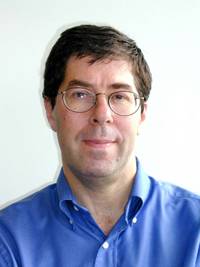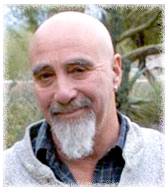|
TOWARD A SCIENCE OF CONSCIOUSNESS 2011 STOCKHOLM MAY 1-8, 2011 AULA MAGNA HALL
PLENARY 13 SATURDAY, MAY 7 8:30 am to 10:40 am
Hudetz A, Milwaukee, Anesthetics and Gamma Synchrony NICHOLAS FRANKS ANTHONY HUDETZ STUART HAMEROFF Imperial College MC Wisconsin University of Arizona
Nicholas Franks is Professor of Biophysics and Anaesthetics at Imperial College London where he is the Head of the Division of Cell and Molecular Biology and Head of Biophysics. After a PhD with Maurice Wilkins at King's College London on X-ray and neutron diffraction and a period at Brandeis University with Don Caspar, Nick Franks moved to Imperial College as one of the founding members of the Biophysics Section, which he now heads. Throughout his career, Nick Franks has been interested in how general anaesthetics act and he has demonstrated that the traditional view that general anaesthetics acted on lipid bilayers was incorrect. With his long-term collaborator, the late Bill Lieb, he has shown that, despite their chemical diversity, anaesthetics act by directly and selectively binding to a small number of protein targets in the central nervous system, a paradigm that is now widely accepted. As well as helping to establish the GABAA receptor as a critical target, in 1988 he discovered a potassium channel in molluscs which could be selectively activated by inhalational anaesthetics. The mammalian homologues, the two-pore domain superfamily, have since been shown to be important targets for volatile anaesthetics in mammals. Most recently he has identified the NMDA receptor as a likely target for xenon, and in collaboration with Mervyn Maze, also shown that anaesthetics and sleep may share common neuronal mechanisms. His current focus is on identifying the neuronal pathways responsible for anaesthetic-induced loss of consciousness. He was the Olof Norlander Lecturer (Stockholm, 1992), the Merel Harmel Lecturer (Duke University, 1995), the Charles F. Stevens Lecturer (St Louis, 2001), the Crawford Long Lecturer (Atlanta, 2008) and the Stuart Cullen Lecturer (UCSF). He was awarded the Ebert prize by the American Pharmaceutical Association in 1992, the Gold Medal of the Royal College of Anaesthetists in 2003, the Excellence in Research Award of the American Society of Anesthesiologists, 2006 and was elected a Fellow of the Academy of Medical Sciences in 2004 and a Fellow of the Royal College of Anaesthetists in 2007. Anthony Hudetz graduated from the Eötvös Loránd University, Budapest, Hungary in 1974 with a M.S. degree in physics. He received Doctor of Biologiae Medicinalis (D.B.M.) degree from the Semmelweis University of Medicine, Budapest, Hungary in 1979, and Ph.D. degree from the Hungarian Academy of Qualifications in 1985. Dr. Hudetz held faculty appointments in the 2nd Department of Physiology, Semmelweis University of Medicine, in the Department of Biomedical Engineering, Louisiana Tech University and currently, in the Department of Anesthesiology at the Medical College of Wisconsin with secondary appointments in the Departments of Physiology and Biophysics. He is also Adjunct Professor in the Department of Biomedical Engineering, Marquette University. Dr. Hudetz’s current research interest is in discovering the mechanisms by which anesthetics produce loss of consciousness. Does consciousness really disappear when the patient is not responding? What happens to the thinking brain when it is anesthetized? Dr. Hudetz’s research team investigates the electrophysiological changes that occur in the brain that has been subjected to varying depths of anesthesia with various anesthetic drugs. They also perform functional magnetic resonance imaging (fMRI) of the brain to determine the critical neurofunctional systems that anesthetic agents primarily target. One of the important findings is that the anesthetized brain retains much of its reactive capability to sensory stimuli. However, the cortical neuronal responses evoked by these stimuli do not reach consciousness due to a disruption of information integration in large-scale neuronal networks. The significance of this research is that it should lead to a better understanding of the mechanism of anesthesia of the neural correlates of consciousness. Stuart Hameroff is a clinical anesthesiologist, Professor of Anesthesiology and Psychology, and Director of the Center for Consciousness Studies at the University of Arizona in Tucson. Beginning in the early 1970s, Hameroff has studied biomolecular mechanisms underlying consciousness, actions of anesthetic gases and information processing in cytoskeletal microtubules inside living cells. In 1994 Hameroff teamed with British physicist Sir Roger Penrose in the controversial Orch OR theory of consciousness, based on quantum computations in microtubules inside neurons.
|
|
|||||||||||||



